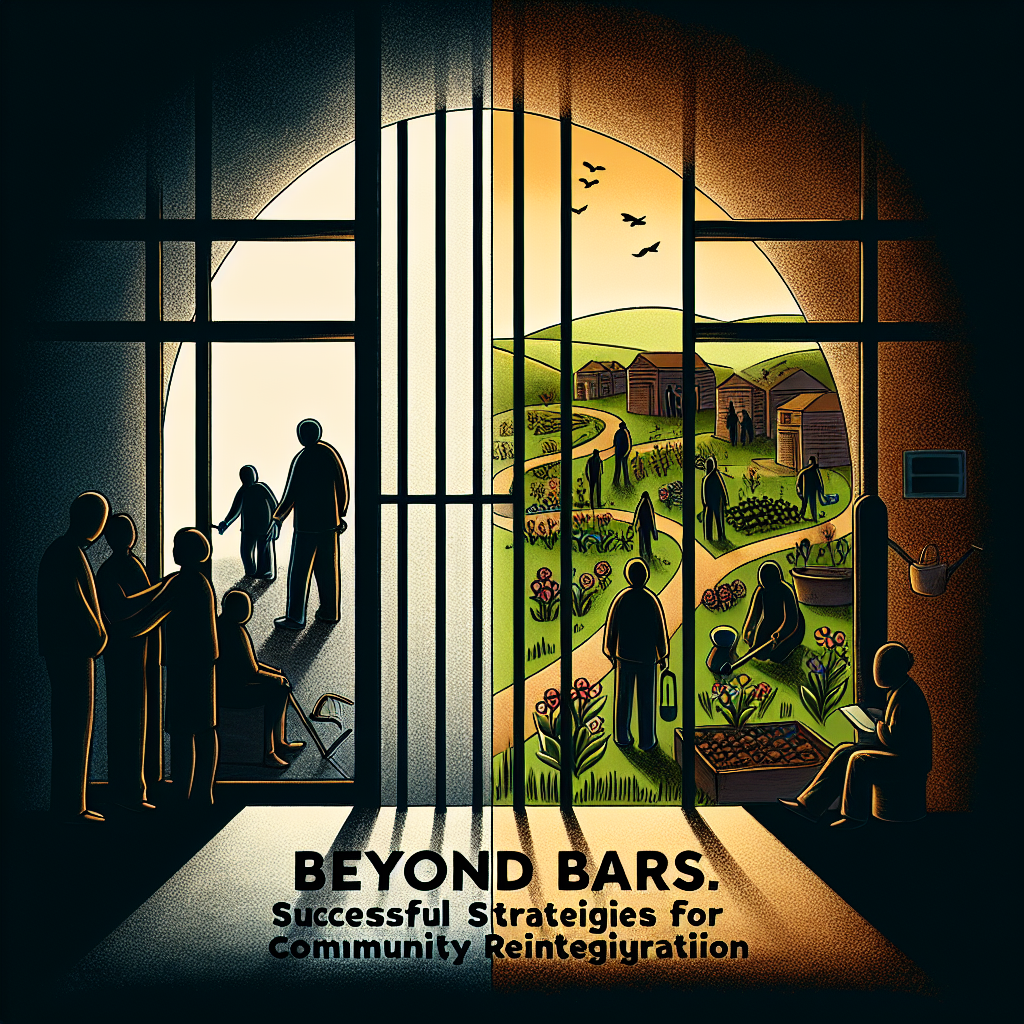Introduction
The journey beyond bars begins long before release from incarceration. In a society where nearly 600,000 individuals re-enter communities annually after serving time, the stakes have never been higher for effective strategies in community reintegration. This process is not merely about physical freedom; it involves emotional, social, and economic dimensions that fundamentally determine an individual’s ability to thrive outside of incarceration. In this article, we will explore Beyond Bars: Successful Strategies for Community Reintegration, offering insights into effective methods, innovative programs, and personal testimonies that illuminate the path to successful reintegration.
Understanding Community Reintegration
Community reintegration refers to the complex process through which individuals transition back into society after spending time in prison. The goals are not only to reduce recidivism but also to foster environments where returning citizens can contribute positively to their communities.
The Importance of Reintegration
Reintegration impacts not only the individuals involved but also their families and the community at large. When reintegration fails, it can lead to increased recidivism rates, perpetuating a cycle of incarceration that drains community resources and diminishes public safety.
Common Barriers
- Employment Opportunities: Finding work can be one of the most significant hurdles. Many employers are reluctant to hire individuals with criminal records, leading to financial instability.
- Social Stigma: Returning citizens often face societal judgment, making it harder to reintegrate socially.
- Lack of Support Services: Access to mental health, substance abuse programs, and housing can be limited or non-existent.
Case Study: The Fortune Society
Established in New York City, the Fortune Society is a prime example of successful reintegration strategies. Their holistic approach addresses housing, employment, and mental health—all crucial areas for returning citizens. Over 70% of individuals who complete their programs avoid recidivism, proving the effectiveness of comprehensive support.
The Path Forward: Strategies for Success
1. Tailored Reentry Programs
A one-size-fits-all approach doesn’t work. Successful strategies recognize that individual needs vary.
Example: The Returning Home Ohio program provides tailored plans based on individual assessments, focusing on job training, housing support, and mentorship.
Table 1: Program Variations
| Program Name | Focus Area | Success Rate (%) |
|---|---|---|
| Returning Home Ohio | Job Training | 65 |
| The Fortune Society | Comprehensive Support | 70 |
| Operation New Hope | Housing Assistance | 60 |
2. Employment Readiness
Securing employment is crucial for successful community reintegration. Programs focusing on employment readiness provide skills training, resume workshops, and interviews.
Case Study: Hope for Prisoners
Hope for Prisoners assists returning citizens with job placement. Their rigorous program has partnered with over 300 local businesses, significantly enhancing employability and reducing recidivism.
Analysis: The partnership model of Hope for Prisoners demonstrates that collaboration between businesses and reintegration programs can be transformative.
3. Community Engagement
Engagement in community activities fosters a sense of belonging. Support groups, volunteering, and mentorship can significantly aid in reintegration.
Example: The Mentoring Program at the Urban Institute matches returning citizens with mentors who help navigates community resources and social reintegration.
4. Continuous Support
The reintegration process should not end upon release but rather continue indefinitely. Access to counselors and support networks helps individuals adapt to their new lives effectively.
Statistical Insight: According to the Bureau of Justice Statistics, those with ongoing support have a 30% lower chance of reoffending.
5. Policy Advocacy
Advocating for policy changes can address systemic barriers affecting reintegration. Issues like expungement laws and employment discrimination require active intervention.
Case Study: The Clean Slate Initiative
This initiative aims to simplify the expungement process, allowing individuals with certain criminal records to clear their records more easily, thus improving their job prospects.
Conclusion
The journey Beyond Bars: Successful Strategies for Community Reintegration is multifaceted and complex, yet it holds tremendous potential. By implementing tailored strategies that emphasize holistic support encompassing employment, social engagement, and continuous assistance, communities can not only enhance the reintegration experience for returning citizens but also foster safer, more inclusive environments for all.
Successful community reintegration is not solely a responsibility of the individual but a collective societal duty. We can create a better future when we embrace second chances and acknowledge that integrating individuals back into society benefits everyone.
FAQs
1. What are the main challenges that individuals face during reintegration?
Returning citizens often encounter employment barriers, social stigma, housing instability, and limited access to support services, which can hinder their successful reintegration into society.
2. How effective are reentry programs in reducing recidivism?
Comprehensive reentry programs, especially those tailored to individual needs, have shown strong success rates in reducing recidivism. Programs like the Fortune Society report success rates over 70%.
3. How can communities support reintegration efforts?
Communities can support by offering job training, housing assistance, mentorship programs, and advocating for policies that reduce stigma and facilitate easier reintegration.
4. Is there a successful model for employment readiness programs?
Yes, programs like Hope for Prisoners exemplify successful models of employment readiness, providing practical skills training and facilitating partnerships with local businesses for job placement.
5. What role does policy play in community reintegration?
Policy plays a crucial role in shaping the reintegration landscape. Supportive policies, such as expungement laws and anti-discrimination policies, can significantly impact the success of returning citizens.
By unraveling the complexities of reintegration, we can pave pathways that lead not just away from bars but toward a hopeful and productive future for all involved.

